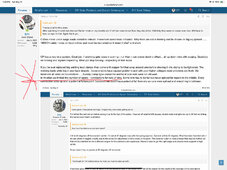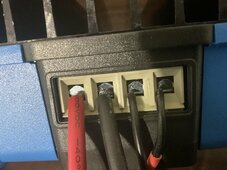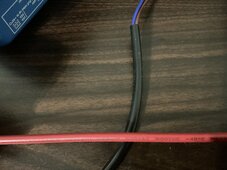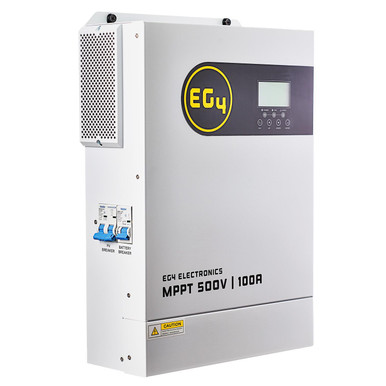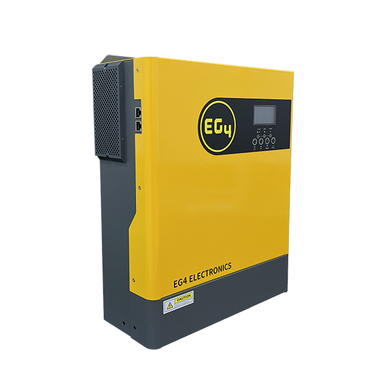EG4 Solar Charge controller advertisement:
""""
Using technology from the EG4 3kW All-in-One Solar Inverter, the EG4 MPPT100-48HV is a simple, affordable, yet reliable solar charge controller MPPT(Maximum Power Point Tracking).
The EG4 MPPT100-48HV solar charge controller extracts the maximum available power from your PV modules and safely converts it to a lower voltage to charge your battery bank. Optimize your new or existing solar power system by adding this unit and take advantage of additional solar harvesting capabilities.
Powerful PV array MPPT voltage range - No need for combiner boxes
- Max open-circuit voltage of 500VDC
- 5500W max usable solar panel PV array power when combining 2 strings with a branch connector
- 22A max PV string current
100A max charging current for quick battery charging rates - Adjustable from 0A-100A(Default 80A).
- Capable of charging a 5.12kWh EG4 battery in ~1 hour @ 100A
- Recommended operating usage: 80A total or 30A per battery to maintain battery lifespan
Battery voltage: 48V nominal.
- 48-62VDC charging voltage (default 56Vdc)
Built-in breakers for added protection.
- PV array DC disconnect breaker
- Built-in battery breaker for added protection
Effective and efficient
- 94% max charge controller efficiency
- Less than 25W self-consumption
BMS Communication
- The MPPT charger is able to communicate with EG4 batteries when operating with non-EG4 compatible inverters via its RS485 BMS port.
What is an MPPT Charge Controller?
An MPPT, or maximum power point tracker is a DC-to-DC converter that optimizes the power between the solar panel array, and the battery bank. Basically, they convert a higher voltage DC output from solar panels down to the lower and consistent voltage needed to charge batteries.
""""""
Signature Solar provides solar panels, off-grid solar systems, grid-tie, and hybrid systems. Quality solar inverters, bifacial solar panels, complete solar kits, solar batteries. Featuring brands such as EG4 Electronics with their solar battery, LifePower4 and EG4 LLifePower4 and EG4 LL

signaturesolar.com
The Above is stated based on their EG4 3000 inverter with 500VDC MPPT Let's look at that Advertising:
""""""
EG4 3kW Off-Grid Inverter | 3000EHV-48 | 3000W Output | 5000W PV Input | 500 VOC Input
3000EHV-48's Design Improvements:
- Larger Battery Terminal Connections(Supports up to 2 AWG)
- Minor Improvements to the exterior design
- Fully compatible with V1 units(may require a simple firmware update, can be found on www.eg4electronics.com)
The EG4 3000EHV-48 is a 3000W all-in-one, multi-function inverter/charger; it combines the capabilities of an inverter, MPPT solar charger, and battery charger to offer uninterrupted power support in a single, portable-sized package. Its comprehensive LCD display offers user-configurable and easy-accessible button operation including battery charging current, AC/solar charger priority, and acceptable input voltage based on different applications.
This compact powerhouse is perfect for small barn builds and small critical loads panels as it easily supports lights, an average fridge/freeze, or a 9K BTU Mini Split.
BONUS KIT INCLUDED ($149 value)
- Wifi Stick with Remote Settings Adjustment
- 125A UL listed Nader Breaker and Din Bracket
- 6Ft 4 AWG Red and Black Battery Cables
Features:
Built for Off-Grid
Performance Components
- Lightweight
- Smaller Footprint Than Other Comparable Models
- Overload Protection
- Overtemperature Protection
- Short Circuit Protection
- User Customization via LCD Display
Reliability & Safety Testing
- 3-Year Warranty Supported and serviced out of Texas
"""""""'"
Signature Solar provides solar panels, off-grid solar systems, grid-tie, and hybrid systems. Quality solar inverters, bifacial solar panels, complete solar kits, solar batteries. Featuring brands such as EG4 Electronics with their solar battery, LifePower4 and EG4 LLifePower4 and EG4 LL

signaturesolar.com
Notice anything missing from the first page specs...something that should be listed as it is important?
Had to dig for it but the current with 500vdc on EG4 3000 inverter is 18a max . So it is lower.
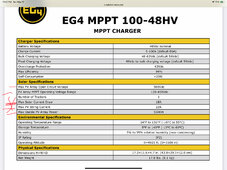
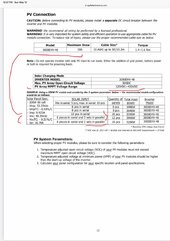
Mppt are dc to dc conversion. With step up - step down transformers when you step up voltage to get higher volts less amps. When you step down voltage amps tries to rise. They obviously can’t feed 500vdc into the batteries. I’ve never seen a print on these mppt…. Anybody got one?
The mppt you have is the EG4 3000 MINUS THE 3000 INVERTER section..
OP earlier post
“‘’’If I was running parallel strings where the amps would double, then I would be concerned with wire heating resulting in power loss. At 12.67A at peak sun, it is not a concern with running 10AWG in a single string.”’’’’
‘’’Vmp of my panels 41.84V. Imp is 12.67A. 8S comes to Vmp of 335V.“
~4241 watts
According to their specs you are GOLDEN. You got 2 EG4 mppt ~ $800.00 FOR much less then Victron 450/100. ~$1230.00. ~$430 savings goes long ways towards wire. Look at that victron. Think Victron recommend battery 2awg wire….for that one. Victron Recommended Fuse ~ 125 - ~150amp …..cross section is wire concern with dc.
Interesting

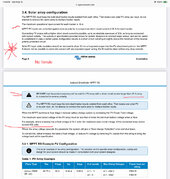
Interesting.
…. My PV for 100ft run of red and 100ft run of black was around ~$115 total. Understand you on the conduit ….
Thanks



